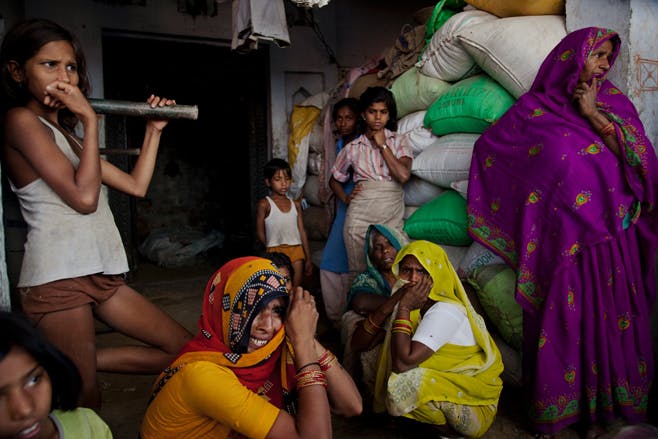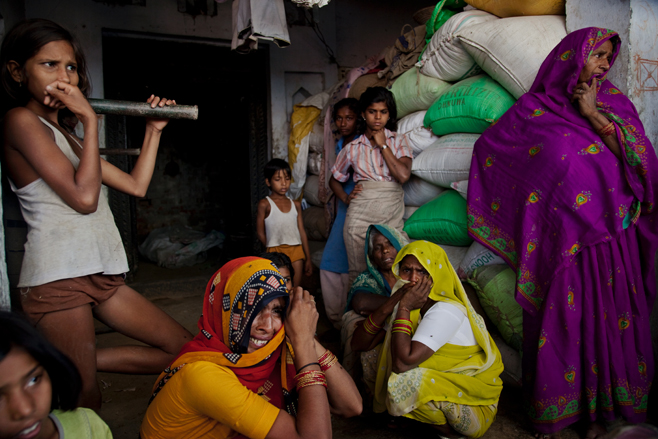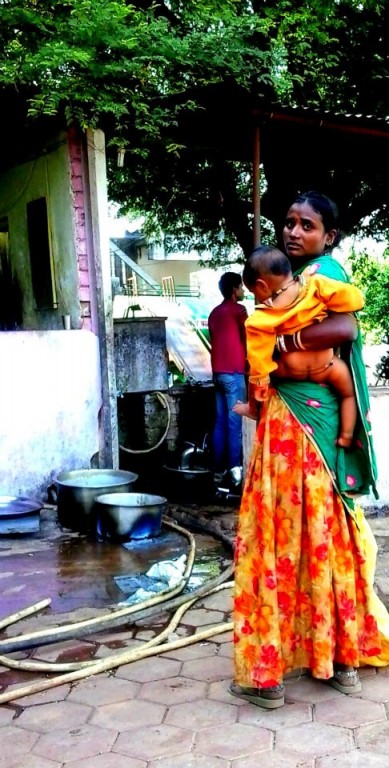Culture, the Culprit
Jan 21, 2015
Story




It's shocking to learn that culture could play such an overbearing effect on a woman's health, especially in the years she first steps into motherhood.
India's high maternal mortality rate(rate of death of women who are pregnant) has a very unacceptable cause, that of 'Culture'.A girl and woman's health is not a priority in households, clans, villages, community and the society.This is majorly because the value of a woman's health has always been very low.Young women do not have a status in their household to raise issues of their health and care, even during pregnancy.Going to a doctor or medical care unit is subject to taking permission from husband and -in laws.Majority of families impose their decision of delivery at home. With no nutrient supplements when required most, no medical monitoring for complications and no guidance many many mothers die at birth.
Is the value of a female life this minuscule that we will continue to allow what is going on in the name of culture??
These women are not remembered long, culture even has provisions for her replacement by a tradition called 'Sororate' where the woman's unwed sister is given in marriage to the man to keep the family tradition going.
Who are these women?Are they educated?Does this happen only in remote rural parts of the country or is widespread?These are questions that arise out of the alarming statistical data glaring at us, too prominent to be dismissed.The most unfortunate aspect of the situation is that it is basically a rural phenomenon but then 73% of India's population lives in the villages, while just the few left in cities and towns. To make matters worse, only 25% of country's health care facilities are concentrated in the rural part of the country where majority of the people live! What an uneven distribution of resources!!! So when I talk about maternal mortality, it is also in the context of these majority women who hail from villages.
Women do not have the power to address issues of their well being in their households, especially so after marriage and please remember they marry very early or in their childhood. In the year 2010, there were 2,87,000 deaths and India contributes 19% to the global maternal mortality. This is just an estimate and you need to bear in mind that most cases of deaths are not even reported as most of them are not institutional deliveries and out of the ambit of government radar.
It is really a pity that while India paves its way to become an economic giant, 50% of its population, the girls and women of the country, are still battling with the right to be born (India has high gender based abortion and is crazy for male child), the right to go to school( India has one of the highest rate of child marriage), right to safety (India is rumoured to be soon heading to become the rape capital) and right to health when she needs it the most (Alarming maternal mortality rate). Behind the many faces of her plight lies the culture of the country, the very same culture which has made many Bollywood films a super hit and what makes India, India.
A life incident comes to my mind when I was an adolescent and had a friend in school who confided that she was allowed to eat only after her younger brother ate and there was some leftovers. This brought me immense pain to learn of my friend's plight but now years later, I can comprehend her situation - a girl hailing from Uttar Pradesh and her position in her household.Though the medically cited causes of the high maternal mortality rate in India are unsafe home births and inadequate access to quality health care, these are just manifestations of cultural diktats on women, the same kinds my friend in school might have been under.
In the year 2000, 189 member countries of the United Nations endorsed and committed themselves to eight Millennium Development Goals, one of which relates specifically to maternal health. Goal # 5- "To reduce by three quarters the maternal mortality ratio." Other goals are closely related, particularly Goal #3- " To eliminate gender disparity in primary and secondary education, preferably by 2005 and at all levels by 2015."
Maternal health is ultimately the result of a society that values women and children regardless of their race and social, economic, and political status, and provides unimpeded access to information and health services from the household to the hospital.
Maternal mortality and morbidity cannot be assessed and reviewed in isolation. We have to take into account all the traits in our culture that work against us WOMEN! Public health initiatives' major challenge would now be to convince people the importance of maternal mortality.Most of all women have to begin a new journey where they themselves are the primary stakeholder of their own development.
We must take this journey now.
Urmila Chanam
Activist and Journalist
Related links:
1. 'As I remember her' (A child bride) http://thewip.net/contributors/2013/03/as_i_remember_her_a_story_of_a.html
2.'Why do daughters go missing'(Sex selective abortion in India) http://worldpulse.com/node/58064
3." I am unbeatable'-From fear to freedom.(Domestic Violence in India) http://worldpulse.com/node/55121




